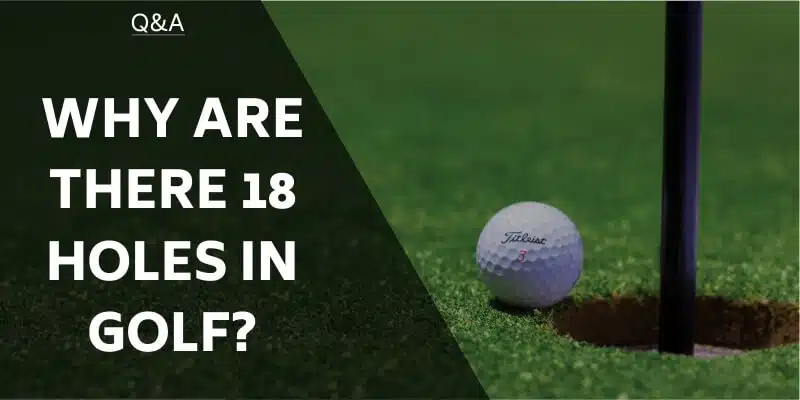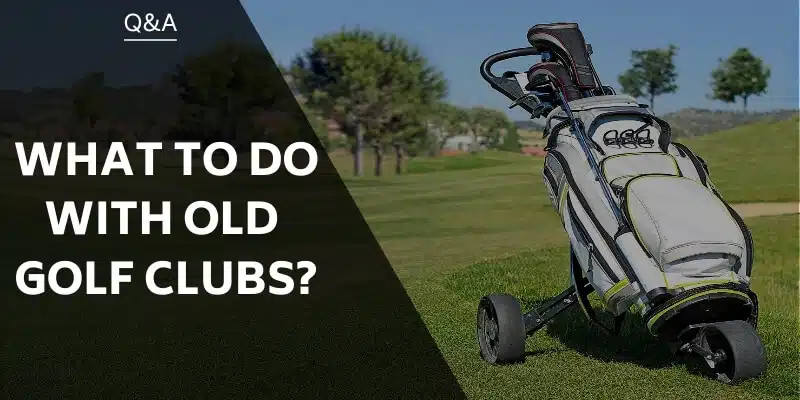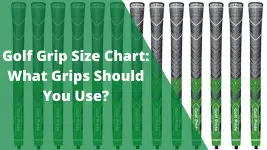The world of wedges can be quite bewildering for many golfers. Do you wonder “Do I Need a Sand Wedge?”. Are you confused about the different types of wedges and which ones you should carry?
Don’t worry, you are not alone. We will help clarify the issue for you and explain whether or not you need a sand wedge.
Contents
What Are The Different Types of Wedges?
Before you can fully appreciate the sand wedge, it is important to understand the different types of wedges available, what they do and how far they can hit.
P – Pitching Wedge
The pitching wedge is the one most golfers are familiar with. The average golfer will hit it roughly 100 to 130 yards at full swing.
What is important to note is that the loft of the pitching wedge has changed over the years and it is not a lot closer to the older 9 irons.
Most pitching wedges have a loft of 44º – 48º. Two or three decades back, they had an average loft of around 51°.
S – Sand Wedge
The sand wedge, on the other hand, has not changed much at all. The average loft is 54º – 58º and at full swing one can expect to get around 70 to 100 yards.
As the name suggests, its main function is to get you out of the dreaded bunkers or sand traps. Apart from that, it is used for shorter approach shots.
It is always easier to have consistency with a full swing than trying for a reduced swing with a pitching wedge when you are closer.
G – Gap Wedge
Also known as the approach wedge, this wedge was designed to fill the gap that has been created by the reduction in loft on the pitching wedge.
They have a loft of between 50º – 52º and most players will get around 80 to 100 yards. A gap wedge is not essential but if you are having difficulty around the greens it might be worth considering.
Bob Vokey is somewhat of a guru on wedges having been a master craftsman at Titleist for many years. If you want to know more about wedges, particularly the gap wedge, take a look at his comments.
L – Lob Wedge
Another wedge that appeals to many golfers is the lob wedge. These typically have a high loft, around 60º – 64º with an average distance of 50 to 70 yards.
What Are The Advantages of a Sand Wedge?
Now that you understand the various wedges, you might still be asking, “Do I need a sand wedge?” With some very rare exceptions, the answer is yes.
They are specifically designed to help you out of a bunker and they are handy for shots closer to the green.
One of the things that makes them effective in the sand is the bounce the offer. This refers to the angle between the front of the sole and the ground.
A sand wedge has a much higher angle which produces more bounce. This is what helps get you under the ball and safely out of the bunker.
If the sand is relatively firm, this is not a major issue. In soft sand, the more bounce the better. It is also handy to have a lot of bounce in longer grass.
Bounce measurements range from a mere 2 up to about 16, most fall between 4 and 14.
This video explains the concept of bounce quite well:
While we all hope never to find the bunkers, most golf courses make this unlikely. You are bound to find a few on most rounds. Unless you know for sure that the sand is very firm in all of them, you will be grateful for a sand wedge.
The loft and bounce are specifically designed to make it a bit easier. It will still take practice to perfect but you have a better chance with the right equipment.
It is also very handy for approach shots around 70 to 100 yards. It will allow you to play a full swing and take the guesswork out of the distance.
For shorter shots, you would have to either consider a lob wedge or play your shot at less than a full swing.
Most golfers agree that a sand wedge is essential in your bag. As your experience and skills grow you can look at other wedges but to start with one should have at least a pitching wedge and a sand wedge.
The Cleveland CBX 2 Sand Wedge is an example of a quality sand wedge that will work well for most golfers. It is a cavity-backed wedge with optimized weighting for more forgiveness.
The turf interaction is enhanced by the Dual V-Sole while the Rotex face and Zip Groove technology both help to maximize the performance of this sand wedge.
When Should You NOT Use a Sand Wedge?
Just because you are in the sand or in your average sand wedge distance for an approach shot there are times when a sand wedge is not the best option.
As discussed above, the sand wedge has a lot of bounce. While this is helpful in soft sand or long grass, it can be a major disadvantage on firm compacted sand or hard ground.
The bounce will be likely to cause you to strike the ball near the middle and the shot will not go as planned.
In these situations, it is better to play a pitching wedge or perhaps a 9 iron to avoid the bounce and get you where you want to go. Try to get a feel for the situation before making your club selection.
The Sand Wedge Final Thoughts
A sand wedge is designed to offer the best help out of those daunting sand traps and greenside bunkers. It is also extremely useful for closer approach shots.
You would be doing yourself a disservice by not carrying a decent sand wedge in your bag.
The Cleveland CBX 2 Sand Wedge is a great option for most players and will be an asset in many tricky situations. It is forgiving and effective where and when you need it most.
However you look at it, a quality sand wedge is essential. Understand when and how to use them and your game will improve.
If you are not totally convinced, give a sand wedge a try. It may take a bit of effort to get used to but before long you will wonder how you ever lived without one.
Nick is the founder of GolfSpan and an avid golfer. He's not quite a pro but has over 15 years of experience playing and coaching golfers worldwide. His mission is to bring the golfing community a better experience when it comes to choosing the right golf gear and finding the right setup for your game.






